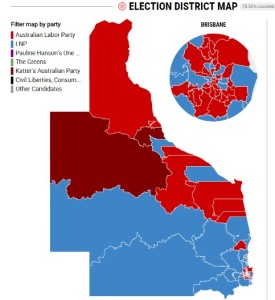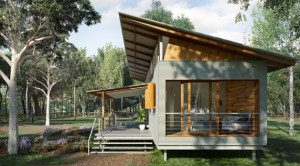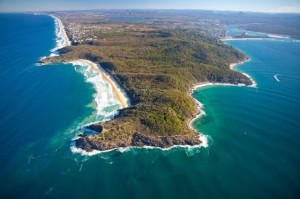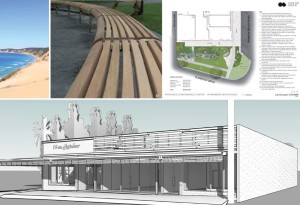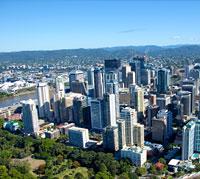Welcome to Martoo Consulting’s latest newsletter providing insights into local planning and development in and around the Sunshine Coast and Wide Bay Regions. Topics include: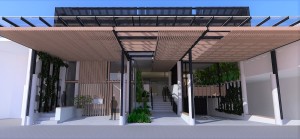
- Opinion – Changes in Parking Policy
- Local Design & Architecture
- Population Trends
- Other Development News
- About Martoo Consulting
We would love to hear any feedback about the articles and any suggestions you may have for future articles.
CHANGES IN PARKING POLICY
Parking close to our destination is considered a ‘right’, rather than a market good to be traded. This is reinforced by Planning Scheme requirements setting minimum amounts of off-street parking for new developments, with a view to protecting (normally free) on-street parking and not allowing for reduced parking rates for good building design and use.
Although most are offended by the sight of large parking lots and want to see attractive buildings and public use areas, we are also very protective of convenient parking located directly out the front of our destination. Noosa Council has begun the journey to change this paradigm with the introduction of two key policy documents: The Noosa Transport Strategy 2017-27 and the reintroduction of a Contribution In-lieu of Parking policy.
 1) The Transport Strategy 2017-27
1) The Transport Strategy 2017-27
The recently endorsed Transport Strategy’s outcomes centre around providing more appropriate:
a) ‘Park-and-Ride services’;
b) Car parking management controls (i.e. paid parking) in congested areas;
c) ‘Walk-and-Ride to Schools’ Programs; and
d) Priority transport lanes for sustainable transport modes (buses, bicycles, scooters, electric vehicles etc.).
2) Contribution In-lieu of Parking Policy
This document (and less talked about in the local media) relates more to development and building renewal. From at least 1991 to 2013 a policy was in place to guide Council when assessing a development application that sought to make a monetary contribution in lieu of the provision of onsite parking in the Visitor Mixed Use (Hastings Street and Noosaville) and Business Centre Zones (Noosa Junction and Tewantin).
The Policy allowed for some good building outcomes which did not provide all of the parking. This resulted in better urban design outcomes while providing capital for the purchase and construction of social infrastructure (examples include ‘The J’ and the Noosa Junction Bus Station).
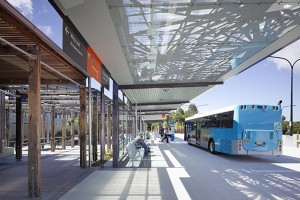 For the past 5 years (and arguably 10 years if you consider the GFC), the lack of policy in this area has resulted in many developments not being renewed or redeveloped.
For the past 5 years (and arguably 10 years if you consider the GFC), the lack of policy in this area has resulted in many developments not being renewed or redeveloped.
However, the reintroduction of this policy will assist in providing a catalyst for renewal while using the contributions for local improvements to improve the social infrastructure in accordance with the Transport Strategy recommendations.
The combined traffic strategies of Noosa will involve not providing more visible parking at the destination, but increasing the attraction and amenities of the place – without having to “pave paradise”.
The added benefits of these policies should also make people rethink how we get around, and maybe it might help us get fit and increase well-being in the process.
DESIGN AND ARCHITECTURE
The development industry is all go at the moment and there have been some great architectural additions around the region. Here are some buildings that have caught our eye recently that may give you some inspiration:
Noosa Junction Redevelopment
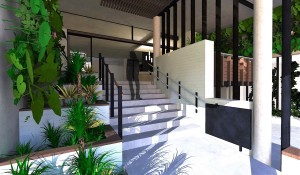 An exciting new co-working space is nearing completion at the former Noosa Junction Westpac Bank site. Highlights are a contemporary facelift to engage with the street, a light-filtering awning, extensive landscaping and green walls. Town planning approvals were facilitated by Nadine Gorton of Martoo Consulting, design by Andrew Bock Architecture and Thompsett Architecture.
An exciting new co-working space is nearing completion at the former Noosa Junction Westpac Bank site. Highlights are a contemporary facelift to engage with the street, a light-filtering awning, extensive landscaping and green walls. Town planning approvals were facilitated by Nadine Gorton of Martoo Consulting, design by Andrew Bock Architecture and Thompsett Architecture.
Sunshine Coast University Hospital
The 160,000 sqm Sunshine Coast University Hospital (SCUH) is Australia’s largest Greenfield hospital.
Developed as part of a 20 hectare integrated health campus, the world class design delivers a new benchmark in integrated research and training facilities, patient-centred care, and as a healthcare workplace for the Sunshine Coast community. The design vision for SCUH reflects the climatically idyllic and welcoming Sunshine Coast way of life.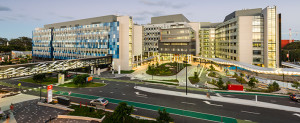
Opened in 2016 with 450 inpatient beds, and expanding to 738 beds by 2021, SCUH will offer a wide range of tertiary level healthcare facilities, including an emergency department, comprehensive cancer centre, specialised medical and surgical services, maternity service, rehabilitation service, mental health unit, renal service, and interventional and diagnostic services.
The Australian Institute of Architecture recently awarded Sunshine Coast University Hospital a prestigious award for Public Architecture at its 2017 National Architecture Awards, describing the project as “a demonstration of the value of patient-centred hospitals, responding here in both form and content to its place in subtropical Queensland.”
Side House Project
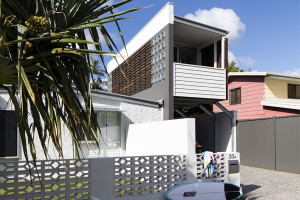 This project by Sprout Architects was fuelled by a desire for socially and environmentally sustainable architecture, and presents an alternative housing solution unique at this time to the Sunshine Coast.
This project by Sprout Architects was fuelled by a desire for socially and environmentally sustainable architecture, and presents an alternative housing solution unique at this time to the Sunshine Coast.
By infilling a 3.5m wide strip of left over space and interlocking with the existing dwelling the result is a deceptively spacious 3 bedroom house.
With Planning Schemes allowing the construction of granny flats as accepted development, this perhaps provides some inspiration for your next project!
View at http://sproutarch.com.au/current-projects/side-house-project/
POPULATION TRENDS
Population Migration
Seems as though Sydney-siders are still looking to Queensland to escape the “rat race”. This Sydney Morning Herald article about migration from Sydney provides an interesting read. Will we see Melbourne become the largest city again? Source: https://www.smh.com.au/interactive/2018/the-world-loves-sydney-australians-arent-that-fussed/.
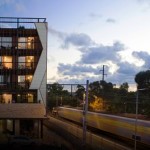
Re-Imaging the Australian Dream
There have been big changes in the housing and rental market over the last 30 years, which are outlined within the Gratten Institute’s recent report – Housing affordability: re-imagining the Australian dream.
Unless your parents have money to assist with buying a house, it appears more of Generation Y and the Millennial’s will be living in units, or renting ‘sleep outs’ for the rest of their days.
Source: https://grattan.edu.au/report/housing-affordability-re-imagining-the-australian-dream/
OTHER NEWS
- A key Sunshine Coast Council owned carpark at Mooloolaba is being redeveloped. The Council indicates that there will be some form of paid parking for the site with a high rise on top. https://www.sunshinecoast.qld.gov.au/Council/News-Centre/New-vision-for-Brisbane-Road-car-park-site
- Where is this next casino in QLD going to be located? The mayor of Sunshine Coast Council describes that while there is no current prospect for one in the new CBD, he also notes that no new premium development has been built in 30 years. https://www.sunshinecoastdaily.com.au/news/coast-casino-still-on-the-cards/3344597/
- Noosa Council has gone back to the community after 900+ submissions on the Noosaville Foreshore Management Plan – https://yoursay.noosa.qld.gov.au/noosa-river-foreshore-management-plan. Great interest remains from traders and locals about commercial uses, dogs, pathways and wedding venues.
- On a less busy stretch of the Noosa River within the Sunshine Coast Council area, submissions are being sought on the Lake Weyba Foreshore Management Plan – https://haveyoursay.sunshinecoast.qld.gov.au/lake-weyba-foreshore
- Sunshine Coast Council has recently bought a large parcel of land to the west of Peregian Springs and is calling for submissions on what activities can be undertaken within the large environmental reserve – https://haveyoursay.sunshinecoast.qld.gov.au/doonan-creek-management-plan
- Sunshine Coast Council are also keen to hear why people love the ‘open space and pine areas’ between Brisbane and the Sunny Coast. The Inter urban break recreation study is being advertised now – https://haveyoursay.sunshinecoast.qld.gov.au/inter-urban-break-recreation-study
- Gympie Regional Council has finally released numbers in relation to how much development is being assessed and it appears that while half a billion dollars of development was approved in November 2017 at Fraser Coast, Gympie’s planning application numbers are 1/3 of Noosa and 1/10 that of the Sunshine Coast Council. Despite being connected to the NBN first – there still is no way of accessing information about applications online, here’s hoping these statistics and records come online soon – https://www.gympie.qld.gov.au/documents/40005057/41348107/2018-01-24%20Ordinary%20Meeting%20Unconfirmed%20Minutes.pdf
- Works are to begin after Easter for a new boardwalk to the National Park – Hopefully no more squeezing around people on the run around to the points –https://www.noosa.qld.gov.au/documents/40217326/41478222/2018-03-01%20Special%20Meeting%20Agenda.pdf
- Noosa Council are also seeking ways to target AirBnB’s and get their share of revenue – Airbnb – https://www.sunshinecoastdaily.com.au/news/council-hunts-online-for-airbnb-hosts/3347774/
- The Sunshine Coast, Noosa and Fraser Council Planning Schemes are all advertising changes to their LGIP – An LGIP identifies where the money collected through infrastructure charges needs to go to service urban development at a desired standard in a coordinated, efficient and financially sustainable manner. These are the maps which coordinates where the new big pieces of infrastructure are to go. Check out your suburb to see where the new cycle ways, upgrades to the main roads, recreation parks, environmental parks and stormwater requirements are going to go in the next decade:
- https://www.sunshinecoast.qld.gov.au/Development/Planning-Documents/Sunshine-Coast-Planning-Scheme-2014/Amendments-to-the-Sunshine-Coast-Planning-Scheme-2014/Public-Consultation-on-Proposed-Amendments
- https://www.noosa.qld.gov.au/draft-amendments-to-the-noosa-plan
- http://www.frasercoast.qld.gov.au/-/proposed-amendments-to-the-fraser-coast-planning-scheme?redirect=http%3A%2F%2Fwww.frasercoast.qld.gov.au%2Fhome%3Fp_p_id%3D101_INSTANCE_ItsjnWJ986WU%26p_p_lifecycle%3D0%26p_p_state%3Dnormal%26p_p_mode%3Dview%26p_p_col_id%3Dcolumn-3%26p_p_col_count%3D2
Note: If you’re having trouble downloading the links – Right Click the link and ‘Open in Incognito Button’
